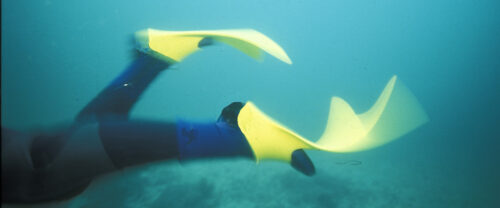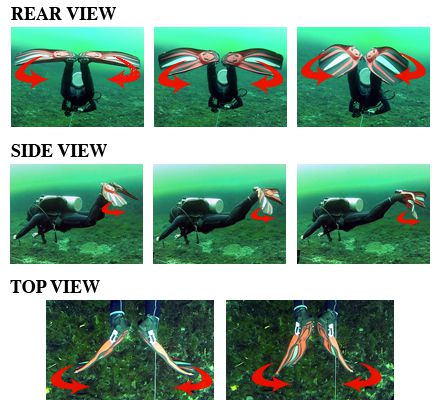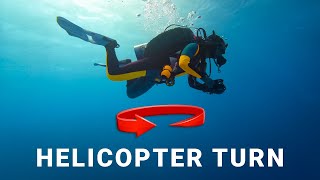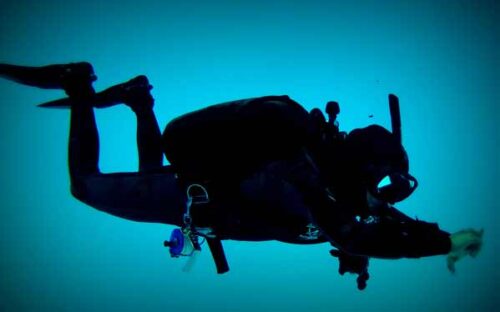Beyond Just Kicking: The Art of Efficient Underwater Propulsion
For a beginner, the goal of finning is simple: get from Point A to Point B. But as you progress, you realize that how you move is just as important as where you are going. Different finning techniques are different tools in your kit, each designed for a specific purpose: speed, efficiency, precision, or environmental protection.
This article in Amadive’s Mastering Core Dive Skills series is your technical workshop. We will break down the mechanics and applications of the primary finning styles, helping you transition from energy-wasting “water kicking” to purposeful, efficient, and elegant “propulsion.”
The Foundational Kick: The Flutter Kick

- Mechanics: An alternating up-and-down motion of the legs, similar to the freestyle swim stroke.
- Power Source: The power should come from your hips, not your knees. Keep your legs relatively straight and use long, smooth strokes.
- When to Use It: Most effective when you need to cover a relatively long distance in open water and want to maintain a steady pace.
- Common Mistakes & Fixes:
- The “Bicycle Kick” Error: Bending the knees too much. This creates a lot of drag and very little propulsion, making you tired and wasting air.
- The Fix: Imagine you are drawing large circles with your big toe. Concentrate on feeling the push from the entire surface of your fin.
The Kick of Finesse: The Frog Kick

This is the kick of control and efficiency, favored by technical divers, cave divers, and photographers.
- Mechanics:
- Recovery Phase: Bring your heels towards your glutes, keeping your knees relatively close together.
- Rotation Phase: Rotate your ankles outwards so the inside surfaces of your fins face behind you.
- Power Phase: Powerfully push the water straight back with the inside of your fins, then extend your legs and glide.
- Why It’s Superior in Many Situations:
- Energy Efficiency: It has a long “glide” phase after each kick, allowing you to cover the same distance with less effort.
- Environmental Protection: All the propulsion is directed straight backwards, not downwards. This prevents you from stirring up a sandy or silty bottom and ensures you never accidentally kick the coral.
- Foundation for Other Skills: It is the base position for executing precision turns and the back kick.
- Amadive’s Experience Tip: To learn the frog kick, start by practicing “just the power phase” while holding onto the side of a pool. Feel how the inside of the fin “catches” the water.
Precision Control Techniques
Once you’ve mastered the frog kick, you can learn its variations for precision maneuvering.
1. The Helicopter Turn

- Purpose: To rotate 360 degrees on the spot without moving forward, backward, up, or down. Extremely useful in tight spaces.
- Mechanics: Perform an opposing, asymmetrical frog kick: one leg performs the power stroke while the other performs the recovery stroke. This small, subtle movement will spin you gently.
2. The Back Kick

- Purpose: To move backwards a short distance without using your hands. Invaluable for photographers who need to adjust their distance from a subject.
- Mechanics: This is the most difficult technique. From the frog kick position, you extend your legs back and use the top surface of your fins to “scoop” water forward, pushing your body backward.
- Note: This technique requires significant practice and good ankle flexibility.
Frequently Asked Questions (FAQ)
- What are the best fins for these kicks?
- Flutter Kick: Split fins or long, flexible paddle fins work well.
- Frog Kick and Advanced Techniques: Stiffer, shorter paddle fins (often called “jet fins”) provide the best power and control.
- How long does it take to learn the frog kick?
- It varies, but most divers can grasp the basic movement after a couple of dedicated practice sessions. Achieving true proficiency and efficiency takes longer.
Conclusion: Swim Like a Diver, Not a Swimmer
Mastering your finning techniques will completely change your confidence and ability underwater. It frees up your hands, allowing you to interact with your gear easily. It saves you energy, protects the environment, and lets you move through the underwater world with the grace and control of a true marine creature.
